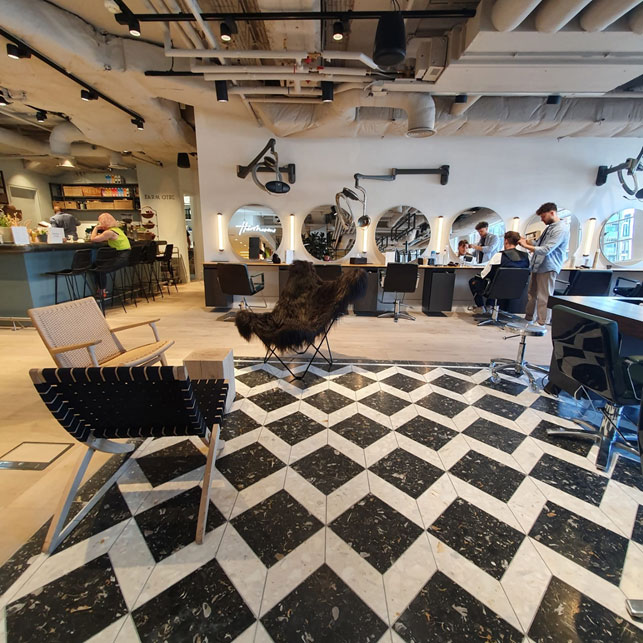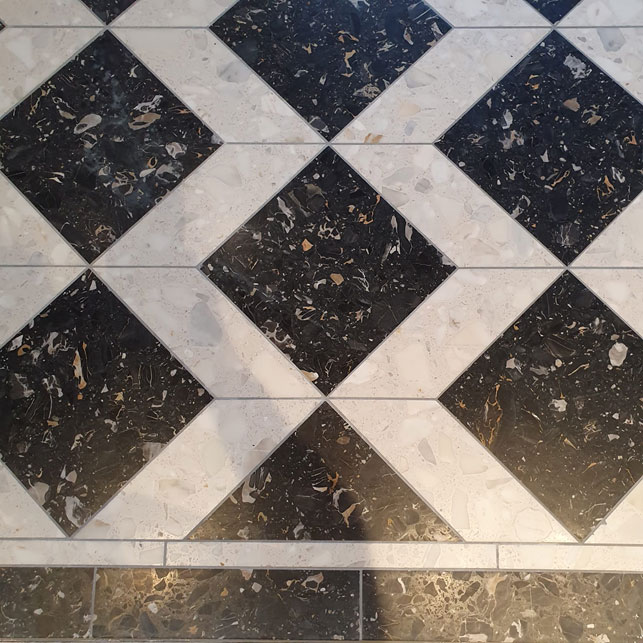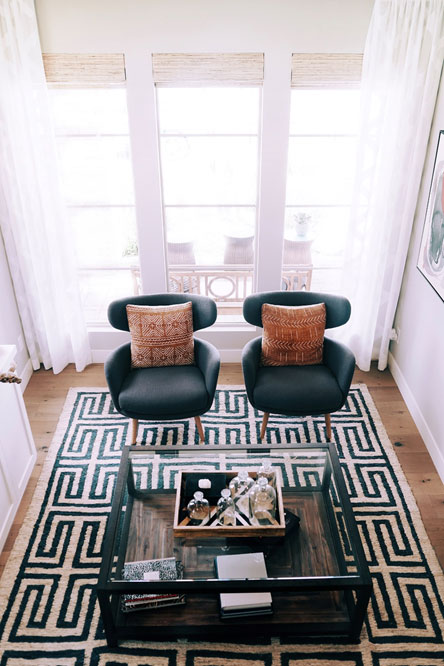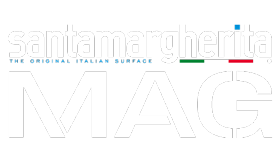The optical style is inspired by optical art, an abstract art movement that developed between 1960 and 1970. Closely connected to kinetic art, over time it has extended into other sectors, including fashion. Today there are numerous applications of the optical style in interior design, with effects that give rooms a feeling of movement that engages and draws attention. Thanks to the use of this style, obviously revisited and reinterpreted according to contemporary taste, it is possible to give shape to impressive spaces and rooms, that amaze with their play on contrasts and unique atmospheres.
Large spaces: all-clear for imagination
Large surfaces are the perfect canvas for creating new scenarios with geometrical and optical patterns. The introductory image shows you the application of SM Quartz Santamargherita for a floor in the Eaton Center shopping mall in Toronto. The effect enchants the spectator’s eye, who also finds engaging patterns and never-before-seen geometries in other points of the structure. Thanks to the glass ceiling, the play of light that occurs throughout the day creates even more movement and make the structure come alive.
Dual tones, a certainty


Particularly suited for people who are looking for a simple yet distinguishing solution, the timeless contrast between black and white. When SM Marble – Nero Portoro meets SM – Marble Arabescato Bianco we have the floor of the Hershesons Salon, the elegant hairstylist’s salon in the Fitzrovia neighbourhood of London.
Optical style for the home? Yes, but balanced.
The floor is the ideal surface for playing with the optical style and geometries. Different colours and finishes, skilfully mixed, create textures that are never predictable and make the home unique. Fun in the kitchen or in the bathroom, tiles characterised by geometrical patterns can enhance any room, but they are not everyone’s cup of tea.

Choosing the optical style for home surfaces can, in fact, seem overwhelming, especially if the available spaces are small. For people who wish to add just a few elements of geometric patterns, we recommend focusing on textiles and accessories. Cushions, rugs, prints and pictures, as well as table accessories: the results will still be striking.
